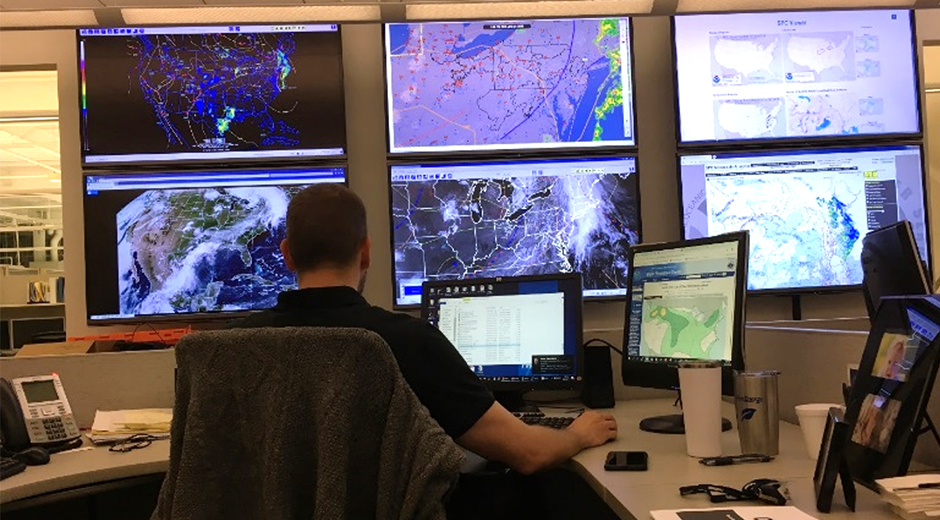FirstEnergy Meteorologists Help Prepare Utilities for Summer Weather
Welcome to summer: home of some of the most extreme weather conditions. Whether it’s heat waves, thunderstorms or flooding, severe summer weather can impact our electric system and cause service interruptions for our customers.
FirstEnergy’s service area stretches across six states impacted by a wide range of weather events influenced by the Appalachian mountains, a Great Lake and even the Atlantic Ocean. This means there is almost always some weather-related threat looming in the distance for at least a portion of our customers.
 We must always be ready.
We must always be ready.
Luckily, FirstEnergy has a team of meteorologists who empowers us to do just that. Meteorologists like Tom Workoff constantly monitor the weather across our entire service territory to give as much warning as possible of potentially hazardous incoming weather that can impact our customers.
“For better or worse, there’s always something interesting going on with our weather,” said Workoff. “Always a new forecasting challenge, always something new to keep an eye on.”
Depending on the scale of an event, they can provide notifications that give us anywhere between 6 hours to 10 days to prepare for severe weather. This time can be crucial to allowing preparation actions such as staffing additional line, substation and forestry personnel based on the severity of the anticipated weather. By taking actions ahead of the storm, we can minimize the duration of outages caused by it.
With a seemingly endless number of weather systems drifting across our service territory, our meteorologists have the added challenge of raising attention only to the legitimate threats.
“We don’t want to cause too many false alarms and spend a lot of resources among our work force and power restoration crews every day by saying ‘well there’s a chance of thunderstorms’,” explained Workoff.
However, legitimate thunderstorm threats are enemy number one, as they can cause a variety of conditions that can impact any portion of our electrical system.
These conditions include damaging wind gusts that can cause broken poles, fallen trees and occasionally even disrupt transmission lines.
“When we get a real severe weather outbreak, we can see severe winds over multiple states at the same time,” said Workoff. “It can cause a lot of damage over a broad area.”
While high winds pose an obvious threat to our electrical system, thunderstorms can produce heavy rain or flash flooding. This is an element with a potential for harm that should not be underestimated, Workoff explained.
“Flooding can really cause a safety issue for some of our responders out there trying to turn the power back on,” said Workoff. “But it can also create power issues where soft soil can cause trees and power lines to fall over on their own or with very mild wind gusts.”
Our meteorologists also keep an eye out for the extreme heat our service territory experiences during the summer months
As heat waves can generate a large demand for power, it’s important to let customers know when a heat wave is anticipated so that they can be conscious of their energy usage and implement energy saving tips as they stay cool.
When summer weather is expected to impact our service territory, we count on our meteorologists to keep us well informed, and you can count on us to share updates on our social media accounts.
For updated information on the company's current outages, FirstEnergy's storm restoration process and tips for staying safe, visit the 24/7 Power Center at www.firstenergycorp.com/outages.
CONTACT: Josh Duke, 330-374-6544

